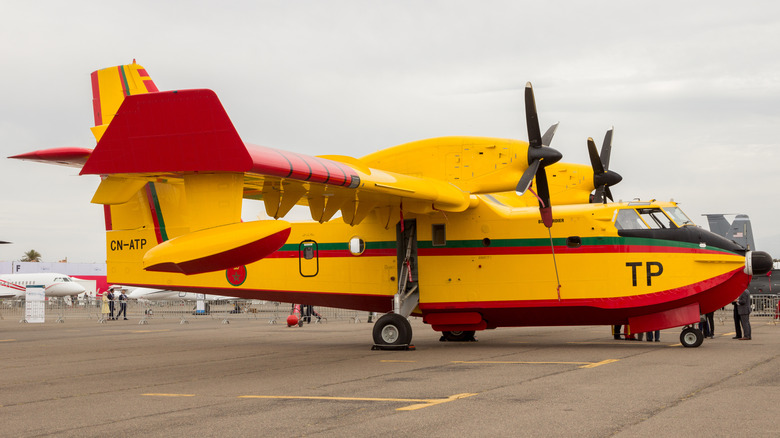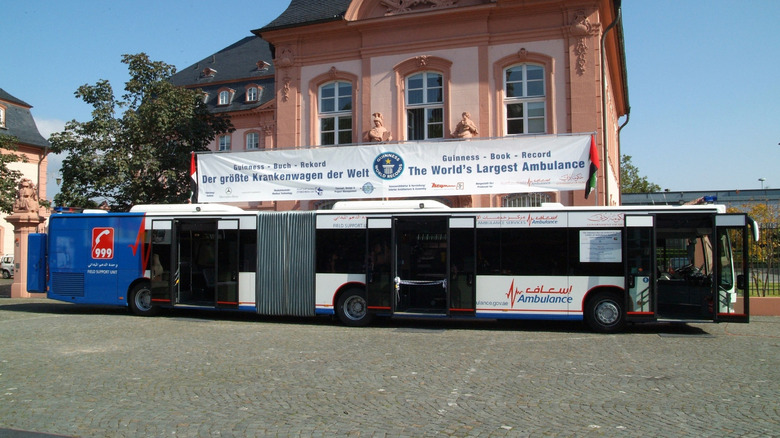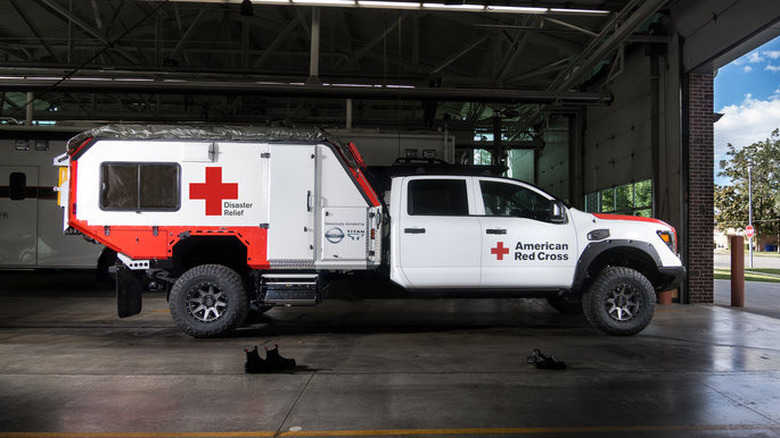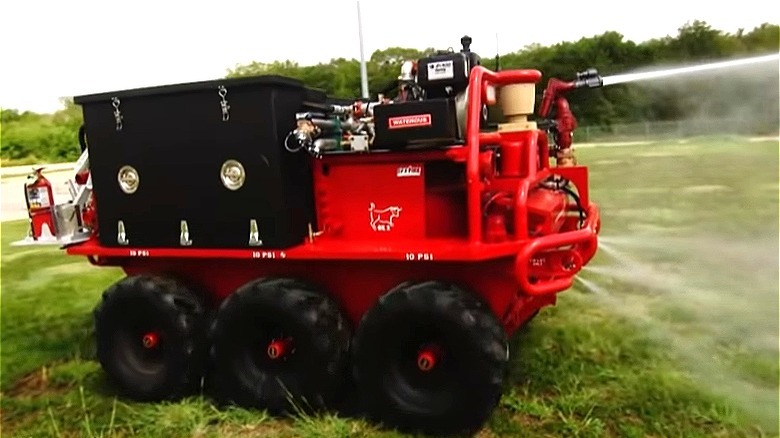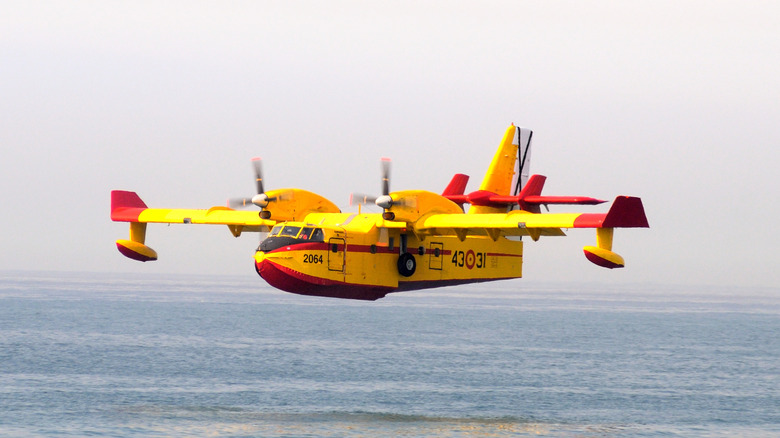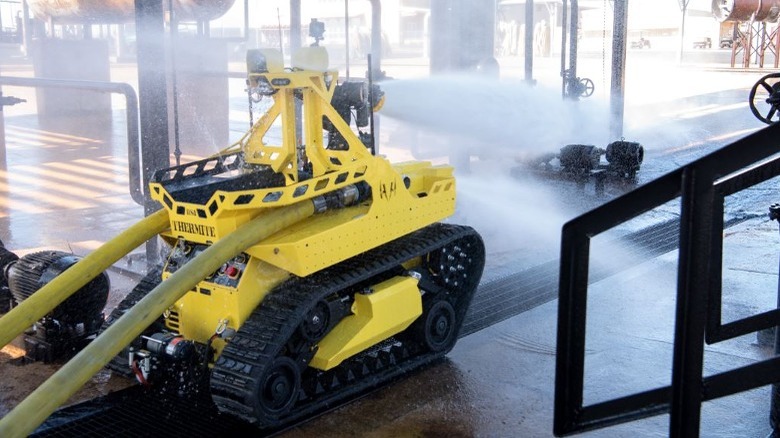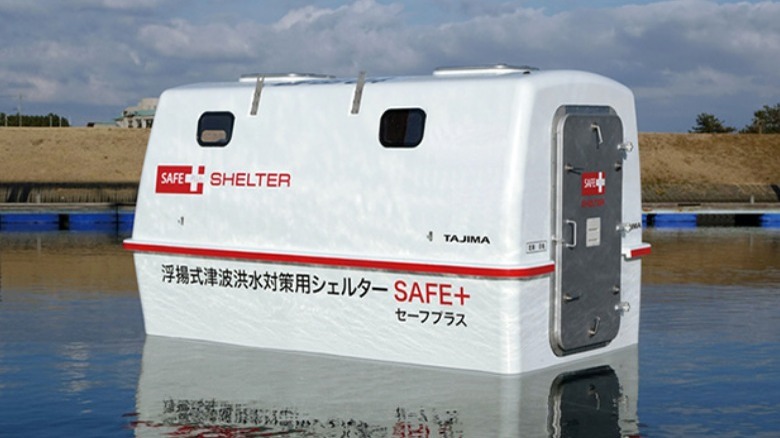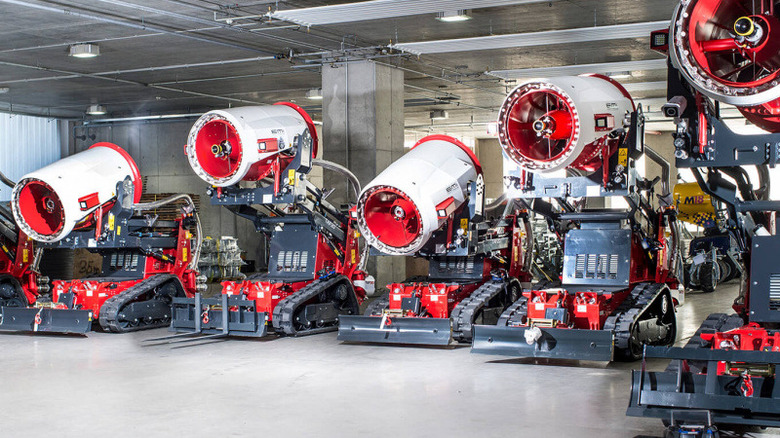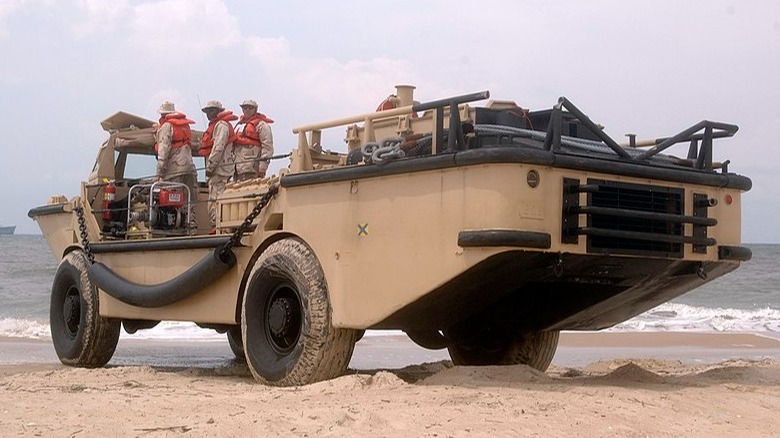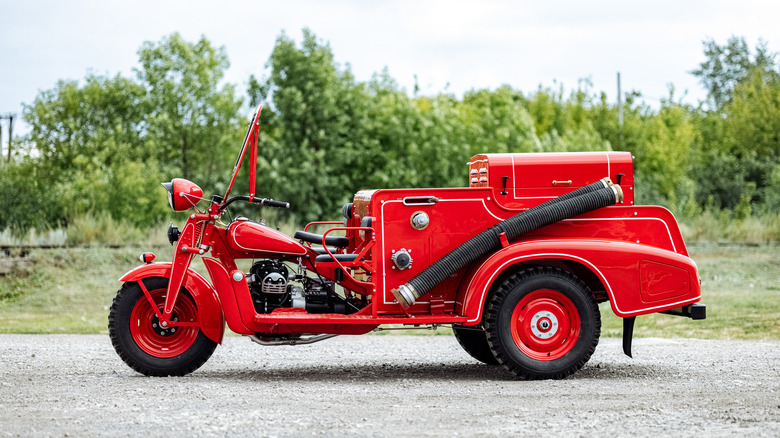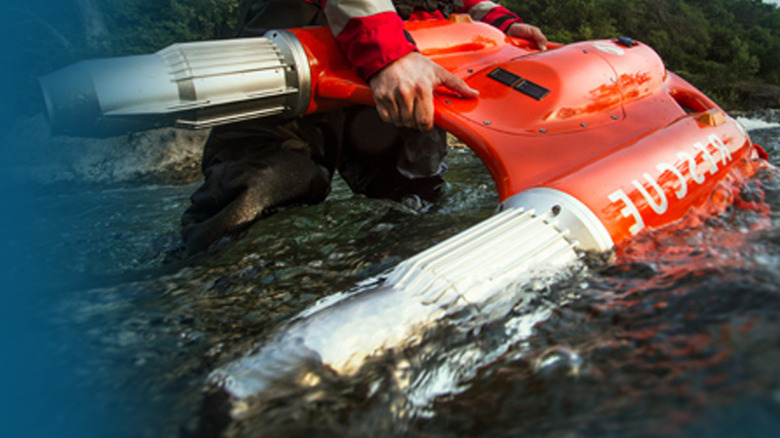10 Of The Strangest Emergency Vehicles Ever Built
Emergency services are critical to ensuring public safety and minimizing the impact of crises, yet traditional vehicles often face limitations when confronted with complex situations. Emergency response and disaster management require ongoing innovation to ensure the safety of communities in dangerous conditions. Throughout history, creative minds have designed inventive vehicles that challenge traditional notions of emergency response.
From autonomous firefighting robots to floating tsunami shelters, these unique machines push the boundaries of design and functionality. They embody the spirit of innovation, combining advanced technology with practicality to address specific challenges encountered during emergencies. Each of these remarkable vehicles has been meticulously engineered to tackle a range of critical situations. Whether it's navigating treacherous terrain, extinguishing raging fires, or providing life-saving assistance in remote areas, these unconventional emergency vehicles offer unprecedented solutions.
Here are 10 of the strangest emergency vehicles ever built, where unorthodox thinking shapes the future of emergency response and drives groundbreaking advancements in the field.
The Citaro Ambulance
Mercedes Benz's globally used Citaro bus, primarily recognized for its role in commuting citizens within city centers and workplaces, was given a different purpose in 2009. This single-decker articulated bus was refurbished with a full suite of emergency medical equipment and immortalized in the prestigious Guinness World Record as the world's largest ambulance.
Stretching just over 65 feet in length, this monumental ambulance possesses the capacity to transport and provide medical care for up to 20 critically ill patients on gurneys or accommodate 123 individuals with minor injuries who can stand.
The ambulance was built on the designs made by Dr. Martin von Bergh of Global Medical Consulting. Initially conceptualized as a thought experiment to address mass casualties resulting from natural disasters or terrorist attacks, the initial conversion of the Citaro bus took place in Dubai. In addition to the record-breaking articulated bus, two additional standard single-decker buses underwent a similar transformation, subsequently joining the ranks of the Dubai ambulance fleet.
The bus ambulance didn't stay a thought experiment for very long. In response to the global pandemic, several more Citaro buses in Germany were equipped with emergency medical facilities, enabling them to serve as ambulances for transporting COVID-19 patients. The remarkable usefulness of these mass transit ambulances has already been established, proving their worth in times of unprecedented crisis.
Nissan Ultimate Service Titan
In their ongoing dedication to charitable causes and innovative vehicle design, Nissan has once again stepped up to support a worthy organization. First with the custom Titan XD built for Habitat for Humanity and this time, partnering with the American Red Cross. The result is the Nissan Ultimate Service Titan, a custom-built mobile command vehicle tailored specifically to meet the needs of the American Red Cross.
Through a successful fundraising initiative that generated $2.5 million for the American Red Cross, Nissan brought the Ultimate Service Titan to life. Following its debut at the Miami Auto Show, this exceptional vehicle is now fully operational, serving the city of Miami.
The Nissan Ultimate Service Titan goes beyond being an impressive truck. It serves as both a command center and an aid delivery vehicle during emergency situations. Equipped with advanced onboard communication systems, Wi-Fi connectivity, and a solar power generator, this mobile command center enables emergency responders to coordinate and execute relief efforts effectively.
Moreover, the Ultimate Service Titan is outfitted with essential emergency supplies, including first aid kits and a dedicated blood fridge for the safe transportation of medical provisions. This comprehensive range of features highlights Nissan's commitment to applying modern engineering to support the critical objectives of organizations like the American Red Cross.
Lockheed Martin's Fire Ox
Lockheed Martin's Fire Ox is less of a vehicle and more of an autonomous miniature fire truck. The Fire Ox is a modified version of the Squad Mission Support System (SMSS) prototype, also known as the Ox. After the prototype was sent back to Lockheed Martin from Afghanistan, engineers looked at other uses for the autonomous utility vehicle.
The Fire Ox is the same prototype that was sent overseas but completely re-tooled for specialty firefighting missions. It was outfitted with a remote-controlled fire hose that draws on an integrated 250-gallon tank. While this can combat most standard fires, it also has an attached 12-gallon foam cell to combat chemical fires.
With these tools, Fire Ox can do almost everything a team of firefighters can do, but instead of putting first responders in harm's way, the Fire Ox can be controlled from behind a computer screen. With a payload capacity of approximately 1,000 pounds, it can autonomously traverse terrains using GPS coordinates and even follow designated individuals upon receiving specific commands.
Undoubtedly, this vehicle holds immense value in diverse emergency scenarios, including woodland firefighting, search and rescue missions, and structural firefighting. Unfortunately, it's a prototype of a prototype and not anywhere near being ready for public use. Nevertheless, Lockheed Martin is refining the design of the Fire Ox, paving the way for small-batch production with the ultimate goal of making it available in the market.
Canadair CL-415 SuperScooper Aerial Fire Fighting Vehicle
In the world of aerial firefighting, various aircraft are utilized to combat wildfires. However, the CL-415 SuperScooper stands out as a unique vehicle purpose-built for this critical task. While other aerial firefighting vehicles are often conversions or retrofitted with specialized equipment, the SuperScooper was specifically designed and constructed by Canadair, with several other manufacturers licensed to produce it.
The SuperScooper is one of the most expensive aerial firefighting aircraft ever made, costing around $30 million. It can hold a little over 1,600 gallons of water in its tank, allowing it to release a substantial amount of water over a wide area while in flight. Unlike other firefighting aircraft, the crew of the SuperScooper does not need to land for refilling. Instead, they can perform a fly-by along a body of water, easily scooping and refilling its tanks, enabling operations to continue without pause.
When the SuperScooper touches down on the water, it can refill its tanks to maximum capacity in under 15 seconds, allowing the team the ability to fight fires continuously for extended periods. This efficiency makes the SuperScooper a force to be reckoned with, as it maximizes rapid response effectiveness. In the sphere of wildfires, speed is of utmost importance in protecting lives and minimizing property loss.
Thermite RS1 and RS3 Firefighting Robots
Designed by Howe and Howe, the Thermite brand of robots is the United States' first commercially available firefighting robot. These futuristic machines combine remote-controlled functionality with a design that evokes the image of an athletic version of the beloved '80s robot character Johnny 5 as a dedicated member of the fire department.
The Thermite robots come equipped with remote-controlled fire hoses and have the ability to be fitted with specialized firefighting equipment adapted to different situations. The Los Angeles Fire Department was an early adopter of the robotic firefighting vehicle, utilizing advanced technologies to enhance their firefighting capabilities and improve the safety of their personnel.
The Thermite RS1 and RS3 firefighting robots are at the forefront of cutting-edge technology. Equipped with thermal cameras, water cannons, and flame-suppressing foam, these robots can be remotely operated by firefighters, allowing them to navigate hazardous environments such as burning buildings. They can even push cars out of the way to quickly aid victims. Their unmanned operation capability in dangerous situations adds an extra layer of safety for emergency responders.
Safe+ Floating Tsunami Shelter
Tajima Motor Corporation has developed an extraordinary emergency vehicle called the Safe+, which serves as a floating shelter during tsunami and flooding events. Unlike conventional cannon-ball-shaped tsunami shelter models, the Safe+ is designed in a cylindrical shape with a lower entrance that provides wheelchair accessibility and space for up to 20 passengers.
Designed to ensure the safety of its occupants, the Safe+ is equipped with four-point harnesses that secure passengers in place until the floodwaters recede. Its buoyancy properties guarantee that the shelter remains upright even in the face of turbulent conditions.
The Safe+ is available in two variants, accommodating either eight or 20 passengers. These shelters are easily transportable and intended to be strategically positioned in high-traffic areas, maximizing their accessibility during emergencies. Tajima Motor Corporation's motivation behind creating the Safe+ stemmed from Japan's devastating 2011 floods, underscoring the importance of effective disaster response solutions.
Turbine-Aided Firefighting Machine (TAF35)
The TAF35 is a remote-controlled firefighting vehicle equipped with a combination turbine and fire hose that is mounted on a caterpillar vehicle. Adjustable spray settings allow the TAF35 to switch between a focused jet stream and a powerful misting effect created by the turbine. Additionally, the turbine can be utilized independently for desmoking and ventilation purposes.
This remote-operated robotic firefighting vehicle is available for commercial sale with several attachments and specialized equipment. It can be equipped with a forklift and cutter accessories, allowing it to clear obstacles in its path. The combined turbine and fire hose system provides the flexibility to ventilate enclosed spaces and deliver a concentrated mist of water.
What sets the TAF35 apart is its ability to navigate challenging terrains autonomously. Its turbine can combat flames and smoke, offering a reliable firefighting solution. In a trial, it demonstrated its swift extinguishing capabilities by putting out a wooden pallet fire in seconds.
The TAF series of robotic vehicles are designed for versatility. They are compact enough to navigate parking lots and commercial buildings while also being suitable for wilderness firefighting, as the stable tread system ensures reliable performance in a variety of terrain.
LARC-V
The LARC-V was originally designed as an amphibious vehicle for military transport and supply missions. Initially, it saw extensive service during the Vietnam War. Afterward, the majority were destroyed or sold as military surplus.
A twist of fate led to the repurposing of several LARC-V units by the Philippine branch of the Red Cross. These vehicles found new life as mobile disaster relief units, showcasing exceptional adaptability in navigating flooded areas. With the ability to traverse both land and water, the LARC-V facilitates the delivery of crucial medical supplies and enables the transportation of victims and emergency personnel to isolated regions.
Amphibious vehicles are immensely valuable for countries like the Philippines that face regular tropical storms – the year 2022 alone witnessed approximately 150 fatalities due to tropical storms and flooding in the region. In disaster relief situations, the efficient distribution of supplies to isolated communities and those in need is critical. The LARC-V, with its amphibious capabilities, simply drives in and out, overcoming barriers that conventional vehicles struggle to navigate.
Kurogane Model 1 Fire Trike
The Kurogane Fire Trike is a rare piece of motor history. With its distinct features, this vehicle not only holds a unique status but also plays a pivotal role in Japan's automotive history. The Kurogane is a direct result of the Great Kanto Earthquake, a 7.9 magnitude earthquake that was immediately followed by a destructive tsunami and rampant fires that engulfed the affected region, resulting in an immense loss of life.
In response to the catastrophic event and to better prepare for future disasters, the Japanese government sought to develop ground response vehicles capable of quick deployment independent of established infrastructure. One of the many innovations of the time was the Model 1 Fire Trike. It was able to rapidly respond and came equipped with a gas-powered pump in the event that fire hydrants became inoperable.
What makes the Model 1 unique is that it was designed and built before the Japanese auto industry was really established. Many of the parts on the Model 1 were American and British-made. After the Great Kanto Earthquake, the Japanese government levied large taxes on imports, spurring the growth of their own auto industry and making it into the powerhouse it is today.
One of the few surviving Kurogane Model 1 Fire Trikes has recently undergone restoration and is now on display at the Motorworld Museum, a private Russian auto museum.
[Image by Vyacheslav Sheyanov via Motorworld Museum | Cropped and scaled | CC BY-SA 4.0]
OceanAlpha Dolphin 1
OceanAlpha's Dolphin 1 is one of the smallest emergency vehicles on this list, but still one of the coolest. OceanAlpha asked a question that nobody knew they wanted the answer to — what happens when you add a motor to a life preserver?
The Dolphin 1 is a powerful motorized life preserver. Controlled through a simple remote, reminiscent of those used for hobby cars, this extraordinary device can achieve speeds of up to 7 mph while ensuring the safe transportation of two adults to safety.
What sets the Dolphin 1 apart is its completely enclosed system. In situations where individuals are at risk of drowning may panic, posing a threat to themselves and those attempting to rescue them. However, the Dolphin 1's enclosed design eliminates such hazards. Devoid of dangerous propellers or any other exposed components, it can be safely grabbed from any angle without risk of harm.
The Dolphin 1 doesn't just function as a flotation device, as it also serves a vital role in mass casualty scenarios. It can drag and deliver life preservers to individuals in need in the field, enhancing overall rescue efforts.
Incidents of falling overboard account for approximately 30% of maritime deaths, emphasizing the critical importance of swift recovery in saving lives. The Dolphin 1's ability to precisely guide itself to victims and facilitate effortless retrieval will undoubtedly save lives.
